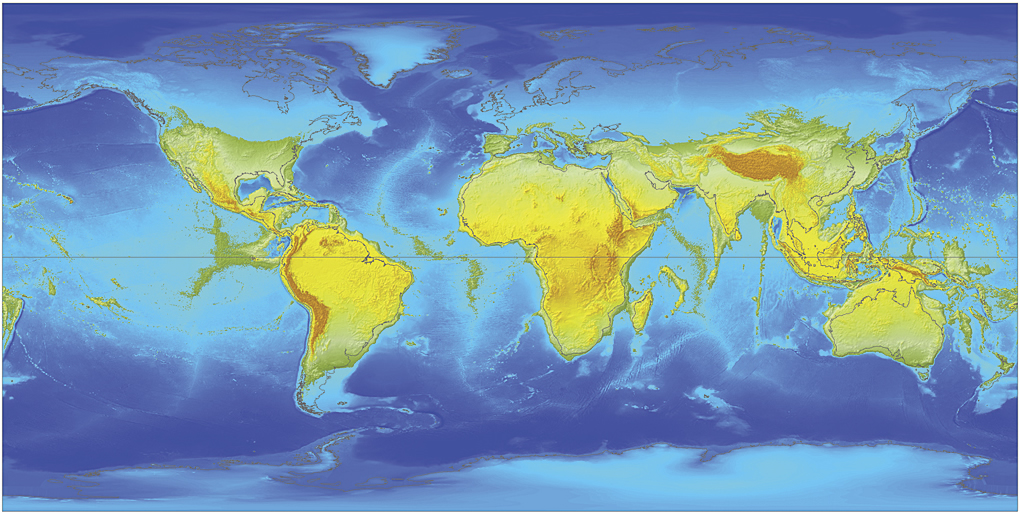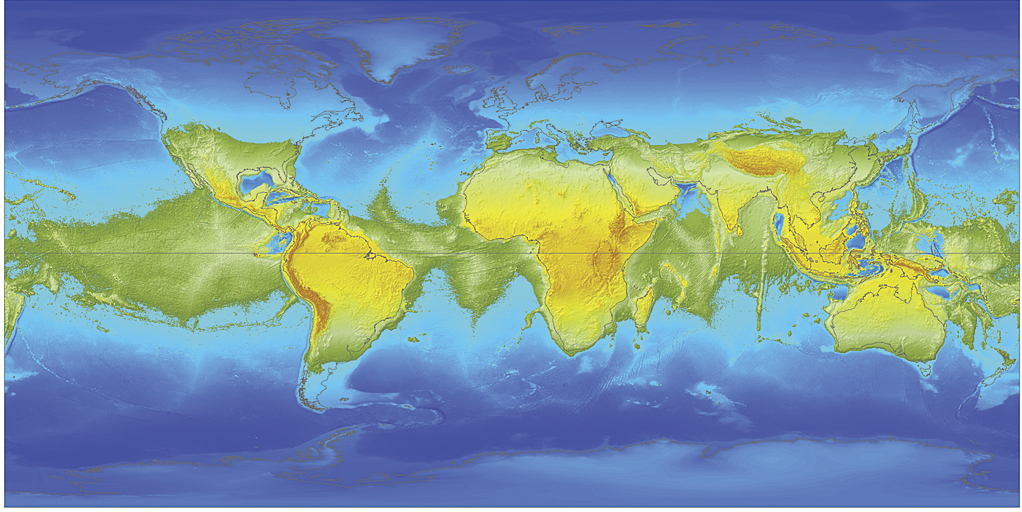The Earth’s rotation is slowing down, very slowly but very surely. So, what would happen if it slowed dramatically and finally stopped rotating around its axis completely but continued revolving around the sun and maintained the same angle of inclination around its axis? Witold Fraczek, writing for the Environmental Systems Research Institute (ESRI), posed this hypothetical question to demonstrate the capabilities of GIS to model such a possibility, using ArcGis “to perform complex raster analysis and volumetric computations and generate maps that visualize these results.”
In an ArcUser Online article titled “If the Earth Stood Still: Modeling the Absence of Centrifugal Force,” Fraczek states: “If the earth’s gravity alone was responsible for creating a new geography, the huge bulge of oceanic water—which is now about 8 km high at the equator—would migrate to where a stationary earth’s gravity would be the strongest. This bulge is attributed to the centrifugal effect of earth’s spinning with a linear speed of 1,667 km/hour at the equator. The existing equatorial water bulge also inflates the ellipsoidal shape of the globe itself…If the earth stood still, the oceans would gradually migrate toward the poles and cause land in the equatorial region to emerge. This would eventually result in a huge equatorial megacontinent and two large polar oceans. The line that delineates the areas that hydrologically contribute to one or the other ocean would follow the equator if the earth was a perfect ellipsoid. However, due to the significant relief of both the continents and the ocean floor, the hypothetical global divide between the areas that hydrologically contribute to one or another ocean deviates from the equator significantly. Analogous to the well-known U.S. Continental Divide, this would be the border separating two giant hemispherical watersheds of the new circumpolar oceans.”
“The series of maps illustrating this article depict the intermittent stages during this migration of the earth’s oceans and changes in land extents, topographic elevation, and bathymetric depth caused by the decreasing speed of the earth’s rotation. These maps demonstrate the intermediate stages of transitional geography from a rotating to a stationary world. They show the effects of the gradual reduction of centrifugal force from its current level to none, leaving gravity as the only force controlling the ocean’s extent.”
To conclude, Fraczek comments: “The influence of the rate of the earth’s rotation has a dominant effect on the geometry of the globe, in terms of the globe’s overall shape as well as the outline of the global ocean. The earth’s physical relief is only a secondary factor controlling the delineation of oceans. The slowdown of earth’s rotation will continue for 4 billion years—as long as we can imagine. The slowdown infinitesimally—but steadily—changes the globe’s geometry and makes it dynamic. The net result of these dynamic adjustments is that the earth is slowly becoming more and more like a sphere. However, it will take billions of years before the earth stops spinning, and the gravitational equipotential creates a mean sea level that is a perfect sphere.”
Editor’s note: The official press release that Apple PR Derek Taylor released on the break-up of the Beatles (1971) read: “Spring is here and Leeds play Cheshire tomorrow and Ringo and John and George and Paul are alive and well and living in hope. The world is still spinning and so are we and so are you. When the spinning stops, that’ll be the time to worry. Not before.”






